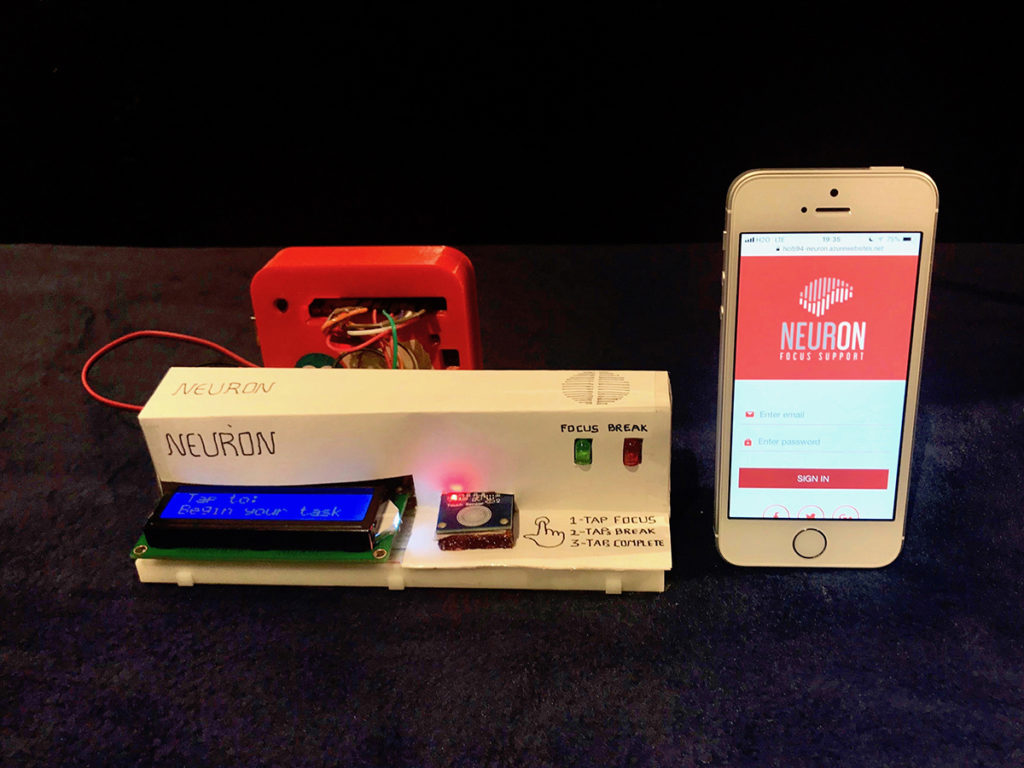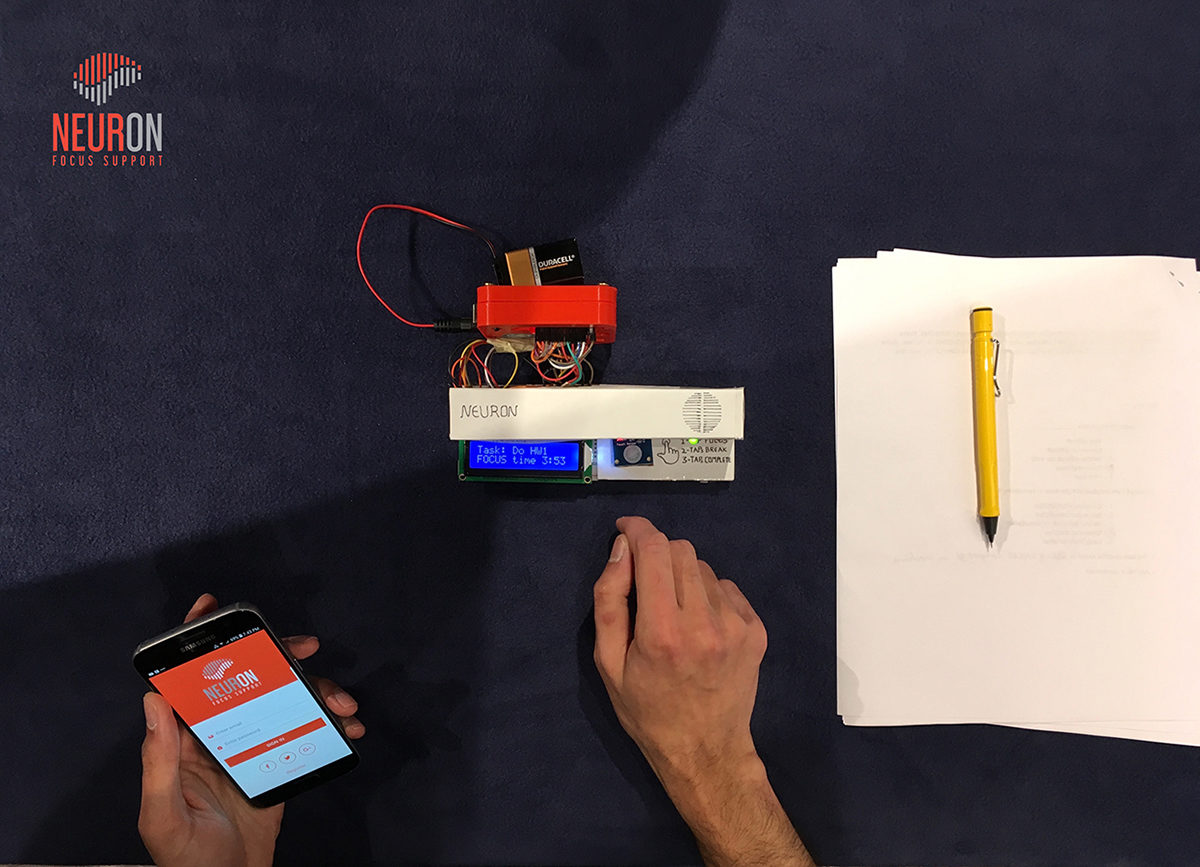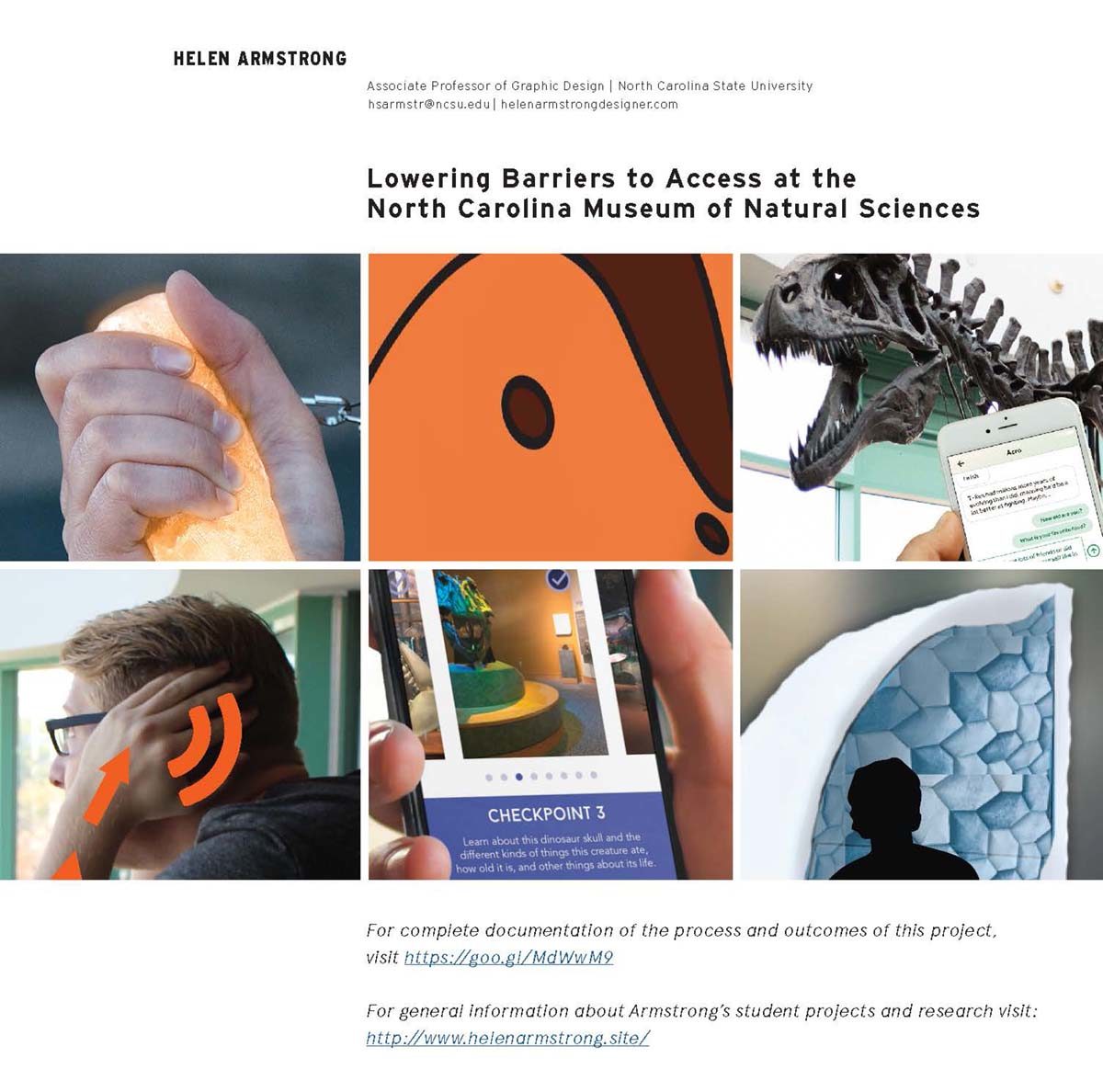Teaching Award Winner
Helen Armstrong
Associate Professor
North Carolina State University
Armstrong’s advanced graphic design studio course, GD400, took on an acute problem for the North Carolina Museum of Natural Sciences (NCMNS). One of the museum’s key exhibitions—the Acrocanthosaurus Exhibition—repelled visitors on the autism spectrum. The space was so overwhelming for these visitors that they often could not enter the room. Instead, they sat on benches outside to avoid the sensory overload of the exhibition. The wide reach of this problem was apparent. In addition to the number and diversity of visitors with Autism adversely affected by the Acrocanthosaurus Exhibition space at the NCMNS, the common occurrence of similar spaces—with similar issues— in Natural Science museums across the world compounded the impact of this problem.
In keeping with the technological focus of the course, Armstrong outlined this student design brief: “Working with the NCMNS Office of Accessibility & Inclusion, develop an assistive tool to transform the central exhibition into an Autism-friendly experience. This assistive tool (phone, tablet-based, physical artifact or embedded technology) should customize the exhibition to serve young adults on the Autism spectrum.” The intent here was not to create what could easily be developed by off-the-shelf technology, but rather to design prototypes that challenged what it meant to enter a space of tangible artifacts as a visitor with impairments.
Over the course of the semester, the students consulted with the Autism Society of North Carolina, as well as the NCMNS, to build representative personas of museum visitors on the spectrum. They benchmarked assistive technology, established research guidelines appropriate to their specific personas, generated User Journey Maps to isolate visitor pain points, and sketched out User Experience Storyboards. From this research the students harnessed technologically-driven approaches—bone conduction tech, chatbots, conversational interface, sensor embedded-networked objects, and gesture-driven participatory interfaces—to build hi-fi prototypes and construct scenario videos that redefined the visitor experience. Via a series of studio visits, the museum team provided feedback. At semester end the students presented to stakeholders, making their work freely available for use by NCMNS museum staff and beyond.
NC State Impact
- Built empathy in students while equipping them with user-centered research methods that enabled them
to effectively harness technology to lower barriers for individuals with disabilities
- Created a dialogue between NC State students and local stakeholders engaged in supporting accessibility
- Established a model for collaborative studio projects that generate new knowledge and then disseminate that knowledge via in-person presentations and online content
- Introduced students to a variety of technologies useful for prototyping and testing assistive devices
Wider Impact
- Identified common pain points to be addressed by the NCMNS in future exhibitions.
- NCMNS has already implemented one of the prototypes: the sensory map and is exploring the implementation of bone conduction technology to create alternative soundscapes.
- Established best practices for designing inclusive museum spaces across the country.
For complete documentation of the process and outcomes of this project, visit https://goo.gl/MdWwM9
Helen Armstrong views design from across the spectrum of a college professor, a researcher, and an author. She is an associate professor of graphic design at North Carolina State University. From 2013–2015 she served as co-chair of the AIGA Design Educators Community Steering Committee, striving to build communities of students and educators. She is currently on the AIGA National Board of Directors and the Design and Culture editorial board. Armstrong authored Graphic Design Theory: Readings from the Field and co-authored Participate: Designing with User-Generated Content. Her recent book, Digital Design Theory explores the effect of computation upon design methodologies from the 1960s to present. Currently, Armstrong is combining her knowledge of participatory practice with computational thinking to explore the potential of intelligent interfaces to address the needs of individuals with disabilities.
http://www.helenarmstrong.site/
Recipient of recognition in the Design Incubation Communication Design Awards 2018.
Like this:
Like Loading...


